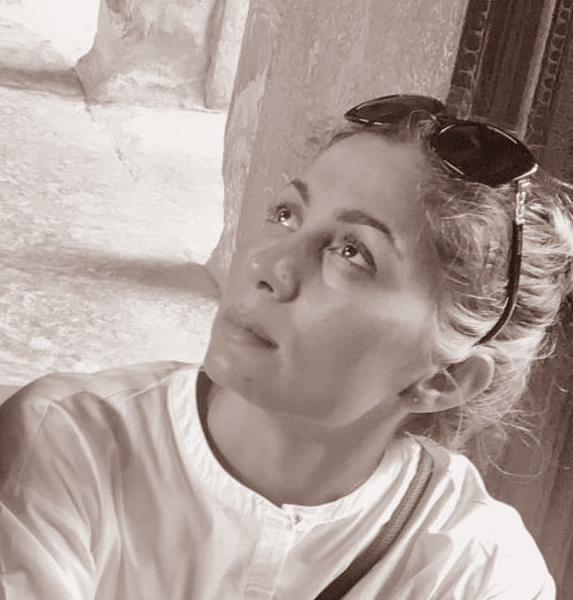


I am Harvinder, I live in Rotterdam with my family, but I was born in India where I did my yoga teacher training and where I continuously immersed myself in the traditional and philosophical aspects of yoga.
I believe that yoga is a science based on the anatomy of our bodies. My belief derives from my own experience; yoga relieved me from my chronic back pain, it literally re-composed me physically and mentally. Yoga is not magic, it is the practicing of breathing and the flow of asanas and daily choices that form the basis of yoga.
The more I learned, the smaller my “I” became. Hence the name of my website iBreathe. When I conduct my class I do it from a humble place in my heart, realizing that I am allowed to share with you the light of the path of yoga. But the journey is yours. I am here to help you with alignment and prevent you from injuries, but you are your own teacher. Join my class and see where that journey takes you.

Before I began practicing Yoga, I was only aware of Yoga as a form of physical exercise. To be honest, it wasn't the kind of exercise I, personally, would practice voluntarily. In fact, I attended my first ever Yoga class to give company to a friend and maybe have a good time. It was that one session that aroused my curiosity and thus began my journey with Yoga.
Prior to this, I wasn't aware that Yoga was multidimensional. It's made up of different styles and each style has it's own unique and special approach. What I have experienced and teach about the different styles of Yoga can be captured in this simple poem by B.K.S. Iyengar, who was one of the foremost yoga teachers in the world and the founder of 'Iyengar Yoga':
Yoga is like music.
The rhythm of the body,
the melody of the mind, and
the harmony of the soul,
create the symphony of life.
Iyengar Yoga is developed by and named after B. K. S. Iyengar. This style of yoga is not about the flow of asanas; it is more about the precision of body alignment and holding poses for a longer duration. For me, this is equivalent to an intense 'work out'! It won’t get your heart racing, but you will connect with your breath and consequently your body will connect to your mind. Iyengar Yoga increases your stamina, enhances your flexibility through stretching exercises, relaxes your body and calms your mind.
Usage of props such as belts, blocks, blankets, ropes, chairs and benches make this style of Yoga different from others. Props help the practitioner to perform every asana while keeping the alignment of the body perfect so as to minimise the risk of injury due to a lack of flexibility or strength. Props allow beginners, the elderly and those of us who wish to experience Yoga asanas in a way that requires less muscular effort, to do so.
I incorporate Iyengar style of Yoga in all my restorative and meditation classes.
Ashtanga Yoga is an energetic and strenuous form of yoga developed by K Pattabhi Jois. The practice always starts with sun salutations and is based on series of asana flows. Each asana is held for a shorter time period. It is a decent physical work out, whilst at the same time the focus on deep, rhythmic breathing (ujjayi), a focused gaze (drishti), and the coordination of every breath with every movement. The certainty of the flow of asanas helps us to turn the mind inward. There’s something very calming and meditative in this practice.
I use Ashtanga Yoga elements in my stronger yoga sessions to release and relax the body and mind with an intense workout.
Just like the other styles of yoga, Hatha Yoga also has its roots in ancient classical Yoga. It originated somewhere in the 11th century and was developed by Matsyendra Natha and Goraksh Natha.
Traditional Hatha Yoga extends well beyond being a sophisticated physical exercise system and integrates ideas of ethics, diet, purification (techniques of inner body cleansing), pranayama (breathing exercises) and meditation. In our modern lifestyle we mainly focus on the asanas, pranayama and meditation.
Hatha yoga session are typically a flow of asanas with anemphasis on pranayama as pranayama is the core practice of Haṭha yoga.
I follow the Hatha yoga approach in my 'all level' yoga sessions.
Pranayama is the practice of breath regulation. It’s a main component of yoga, an exercise for physical and mental wellness. In Sanskrit, “prana” means life energy and “yama” means control.
The practice of pranayama involves breathing exercises and patterns. You purposely inhale, exhale, and hold your breath in a specific sequence.
In yoga, pranayama is used with other practices like physical postures (asanas) and meditation (dhyana). Together, these practices are responsible for the many benefits of yoga.
But pranayama has benefits of its own. These advantages are due to the therapeutic effects of breathing exercises and mindfulness.

I have trained with the Yoga Institute, Mumbai in the areas of Yoga Philosophy, Yoga Sutras and Meditation. Additionally, I have completed Teacher-training courses at Yogacara, Mumbai amounting to 200 hours and 500 hours respectively. At the moment, I am pursuing several courses under the Ministry of Ayush, India. These are certified by the Indian Yoga Certification Board.
